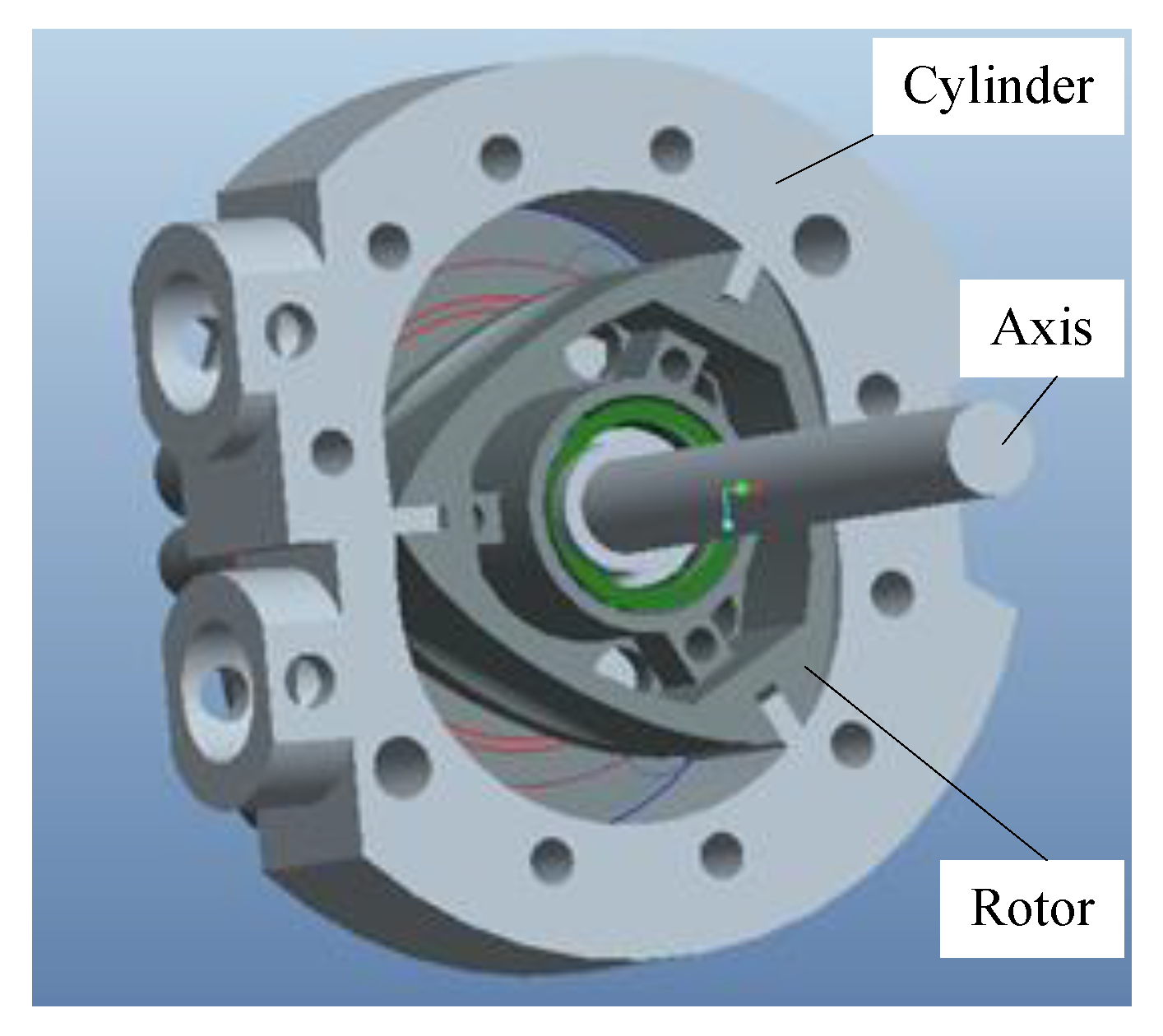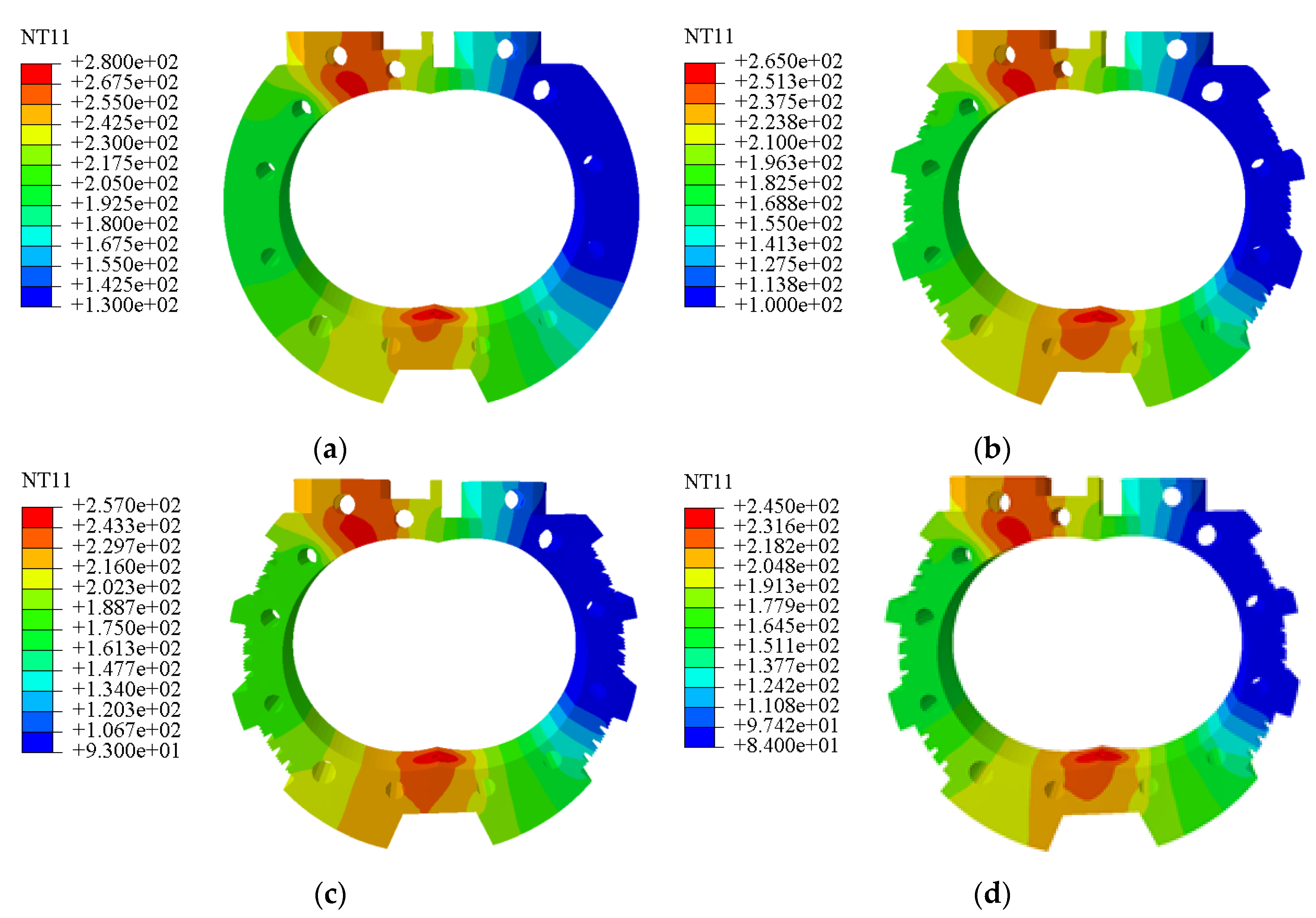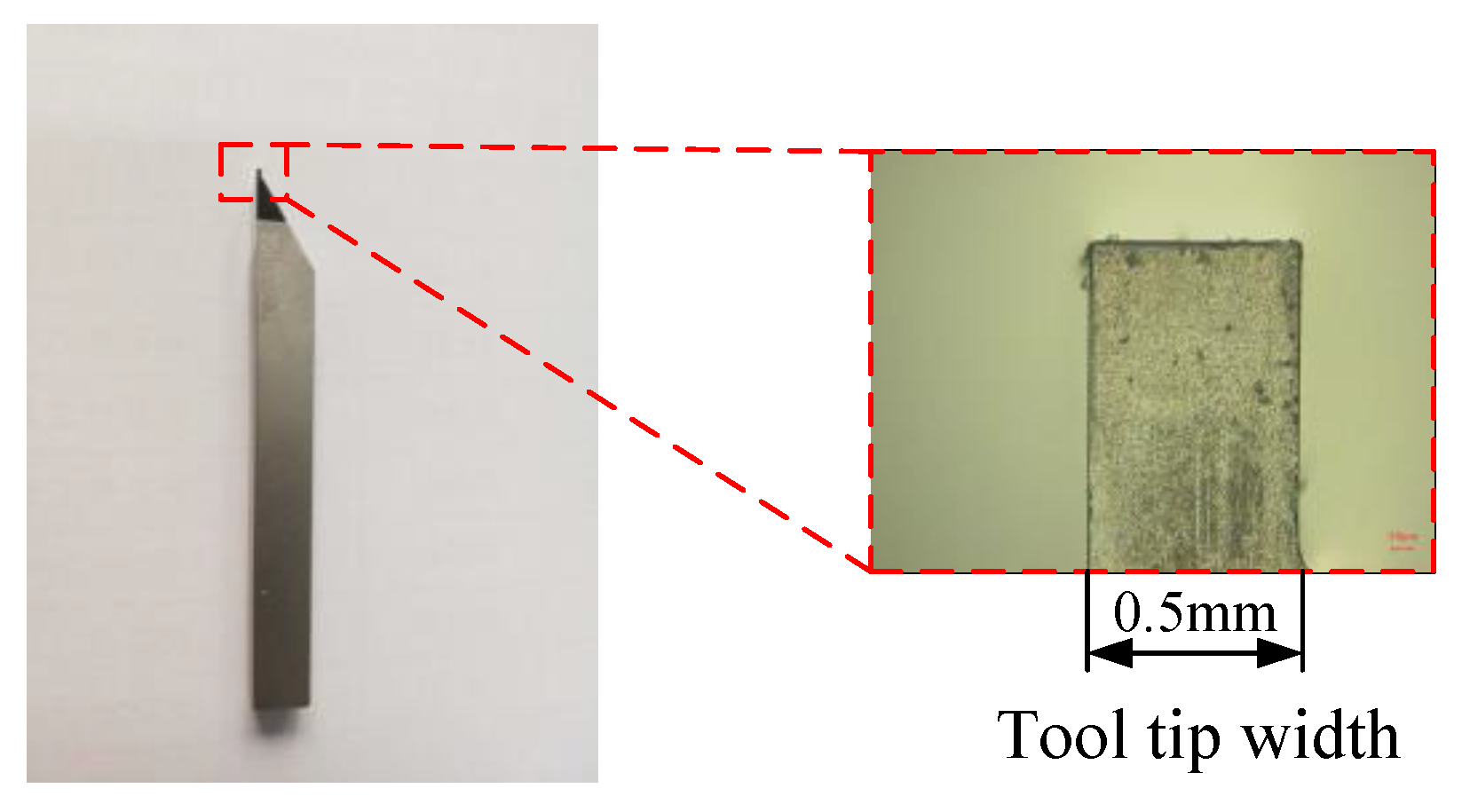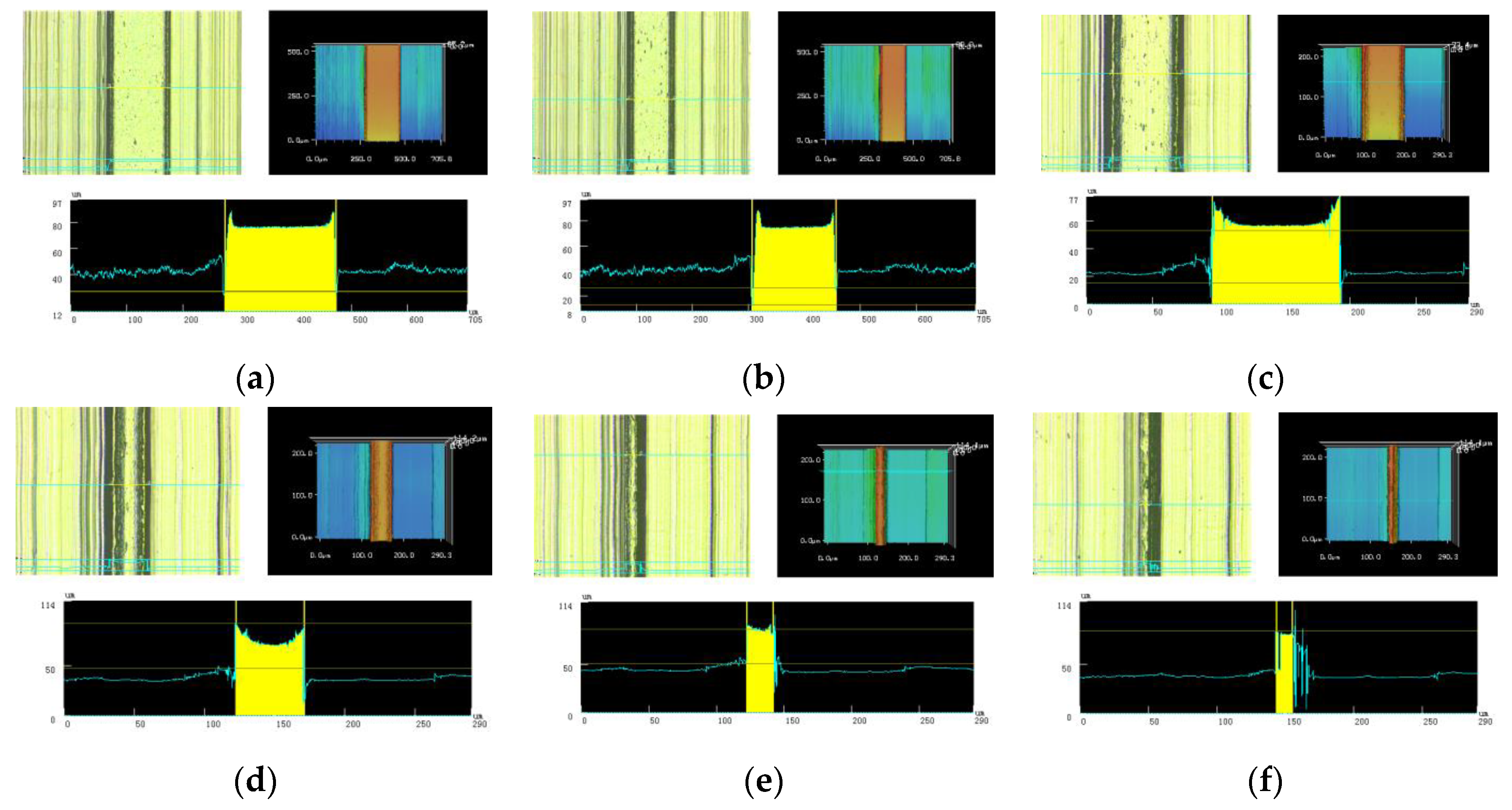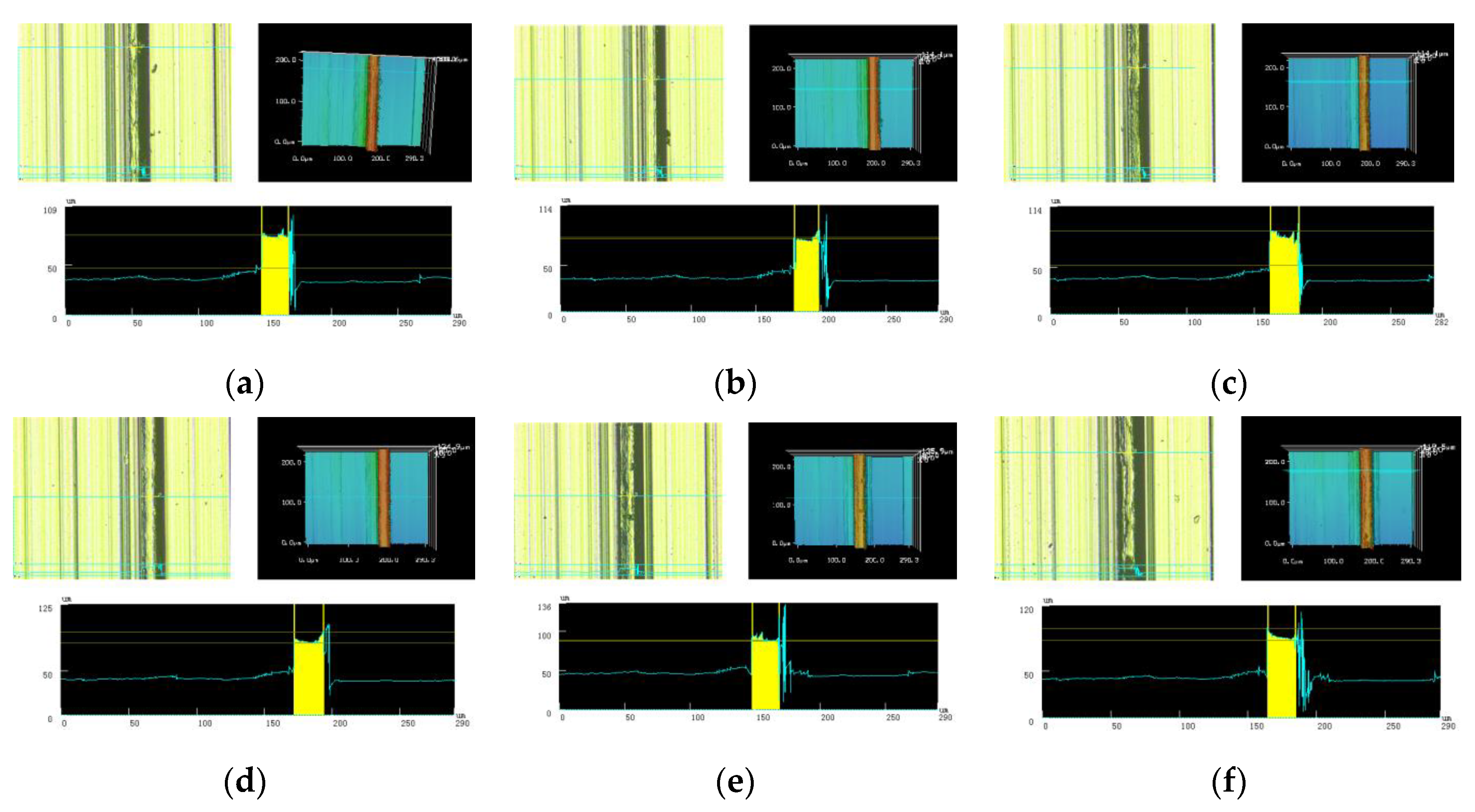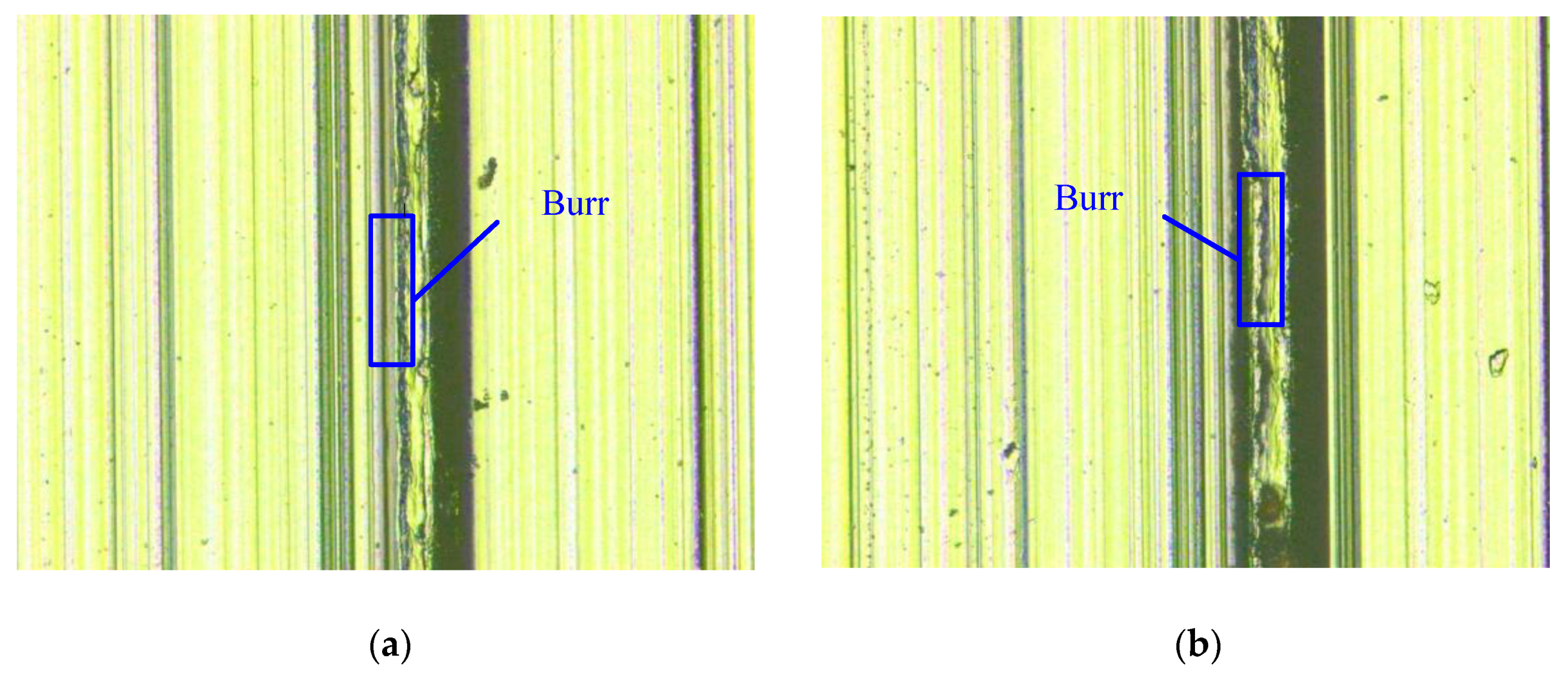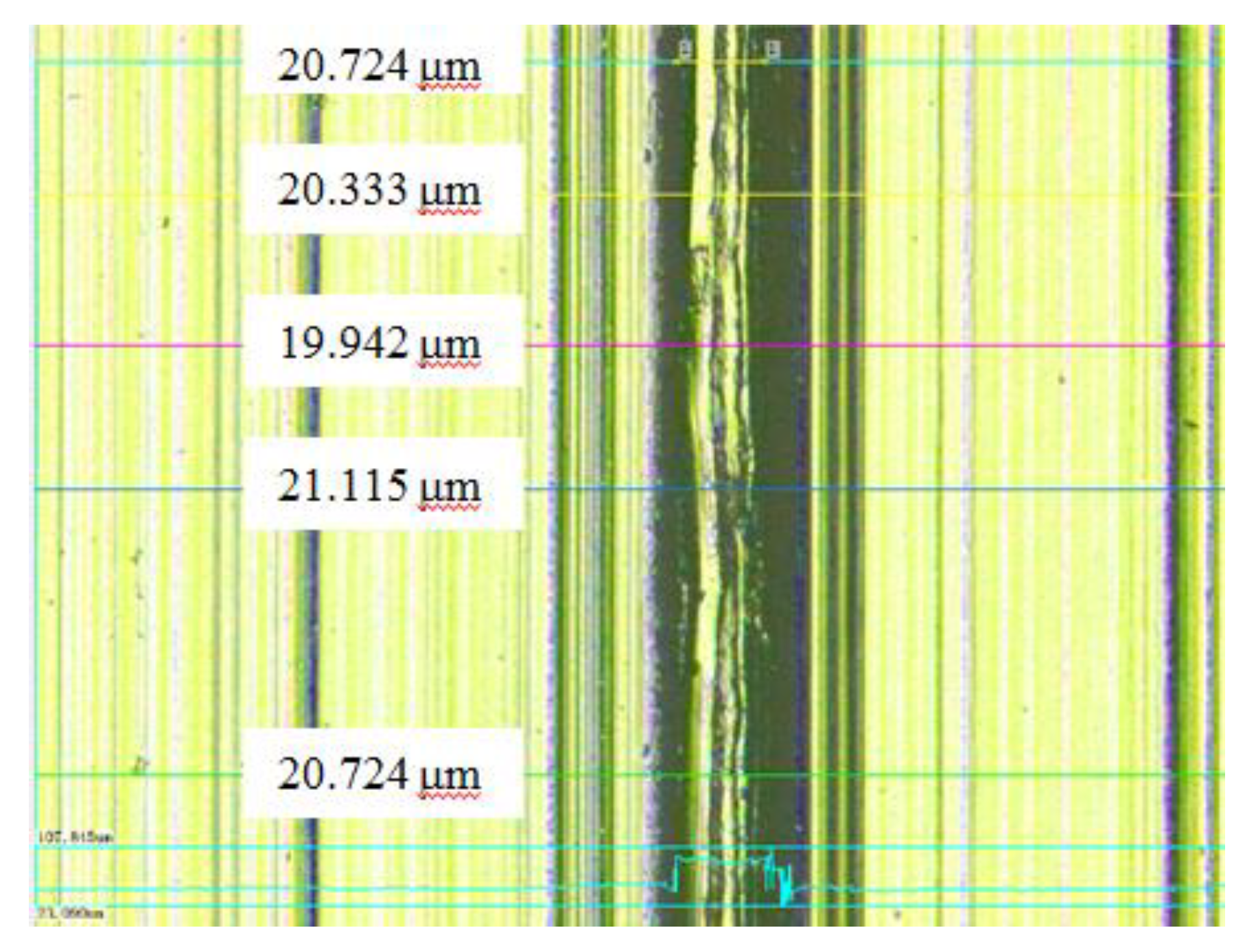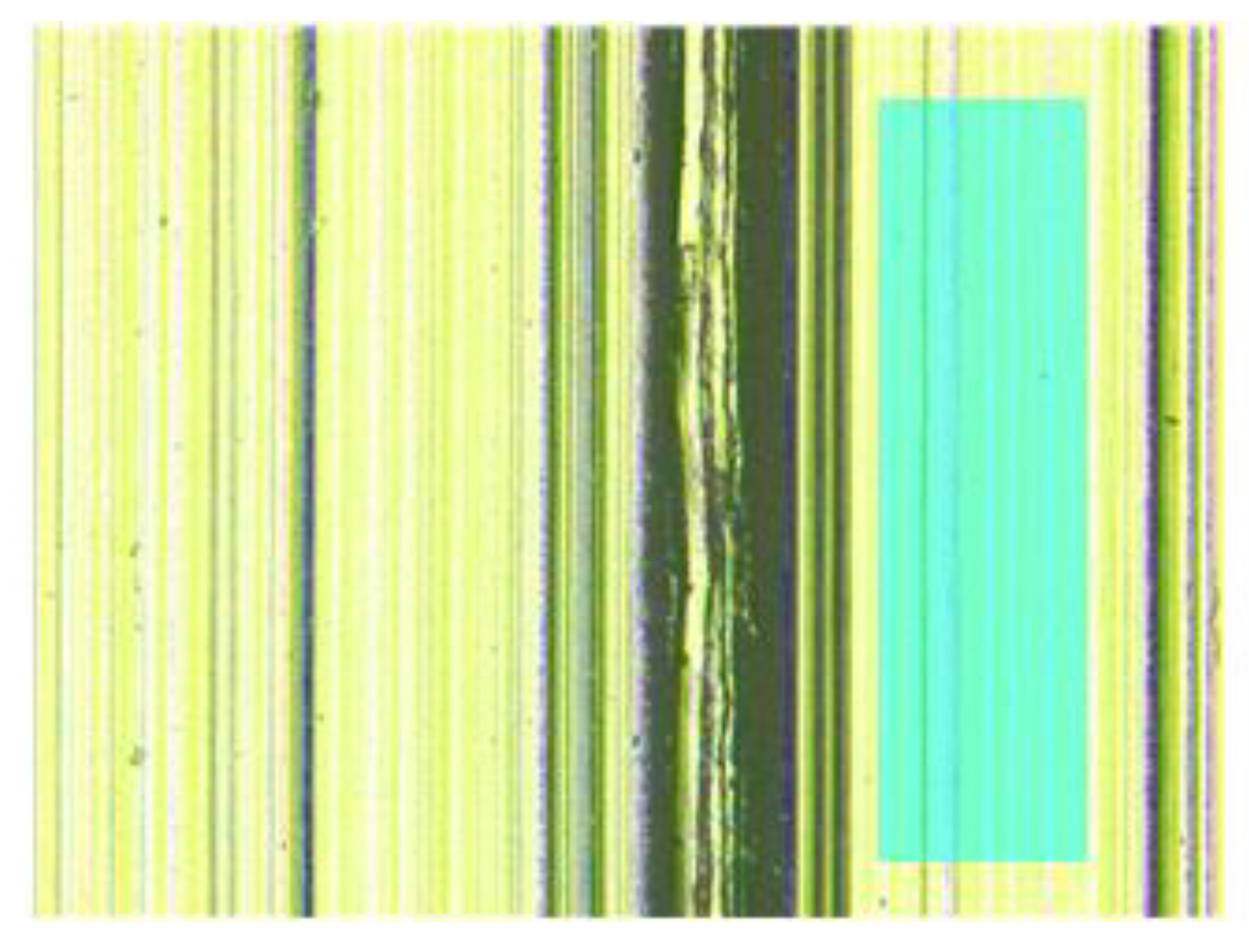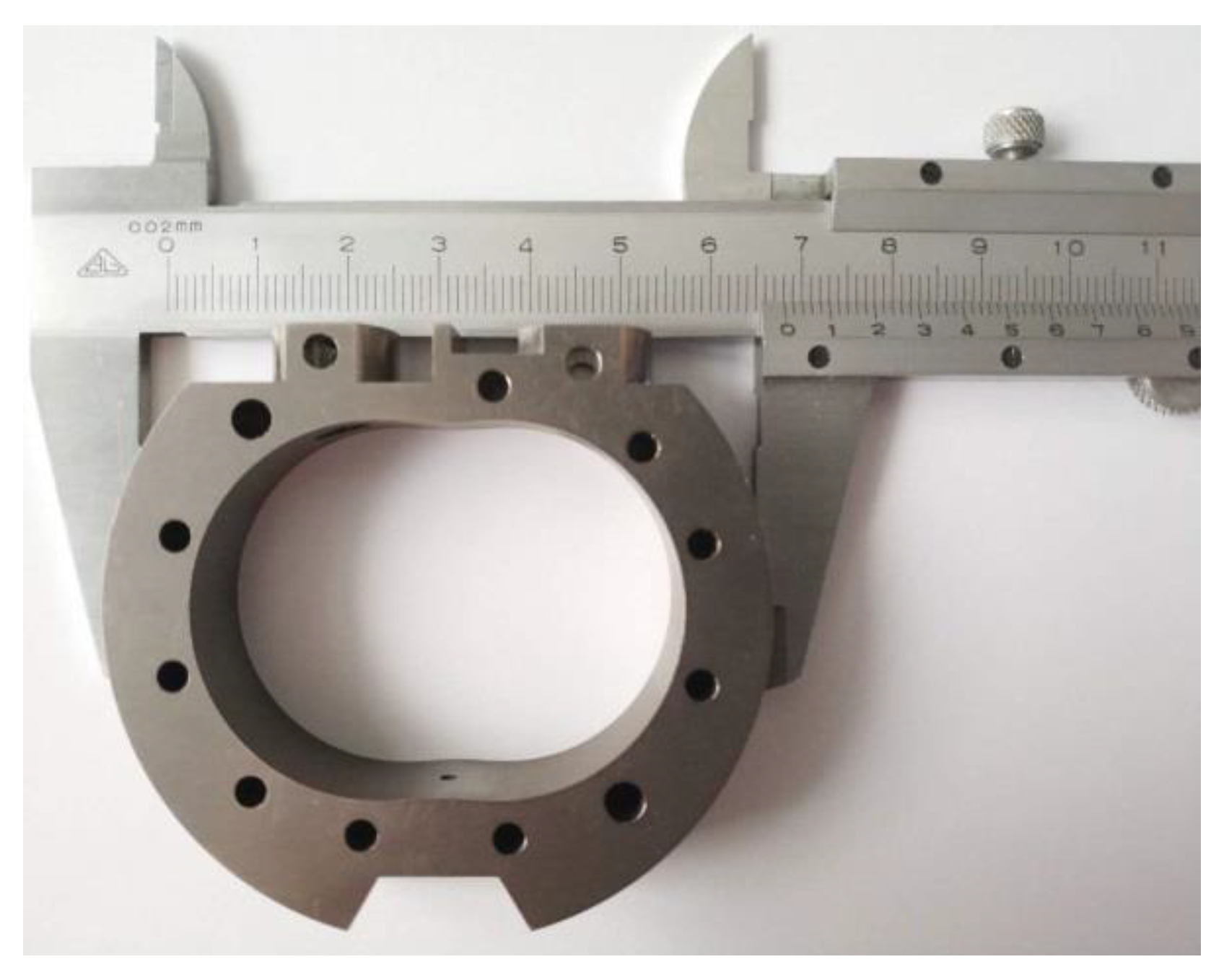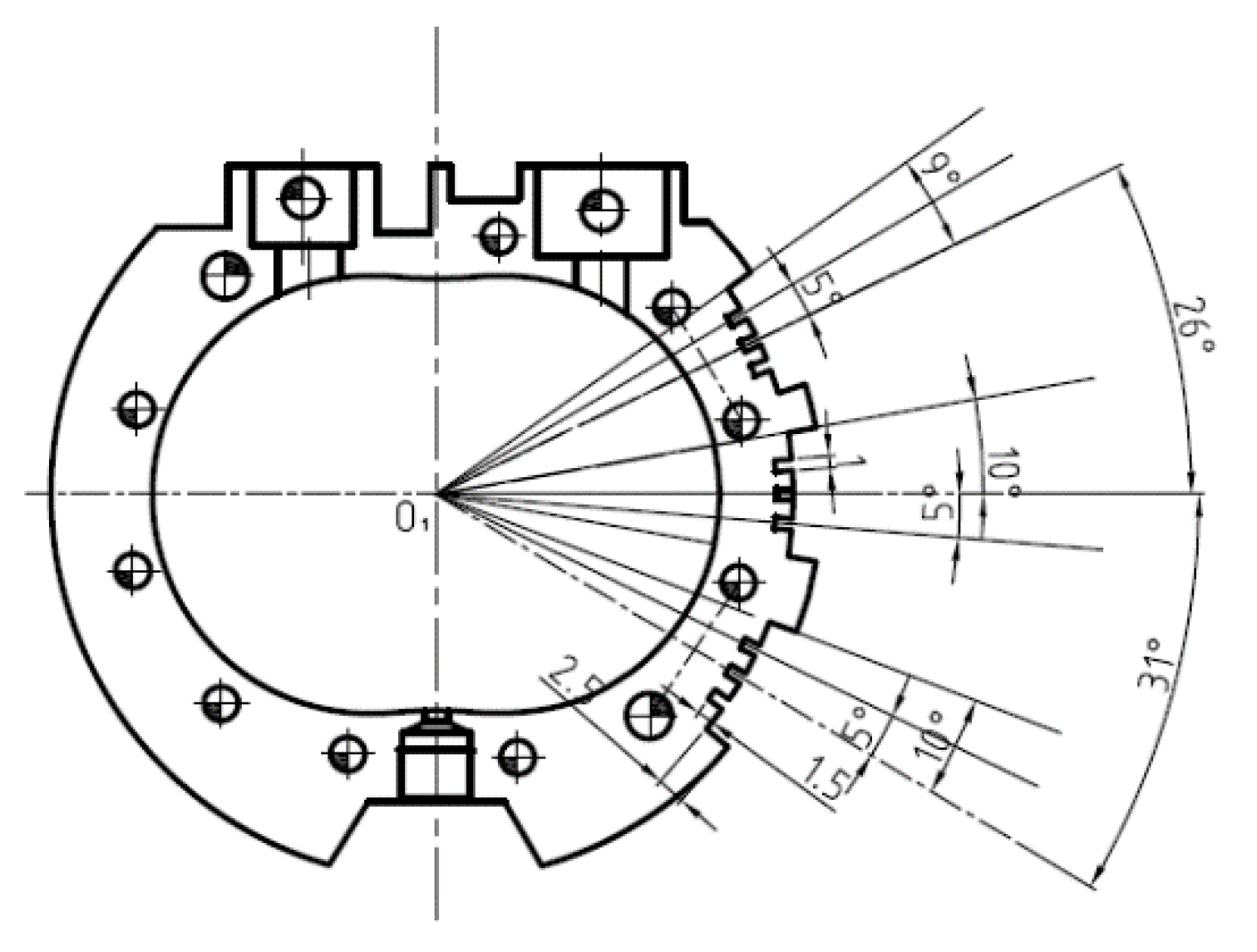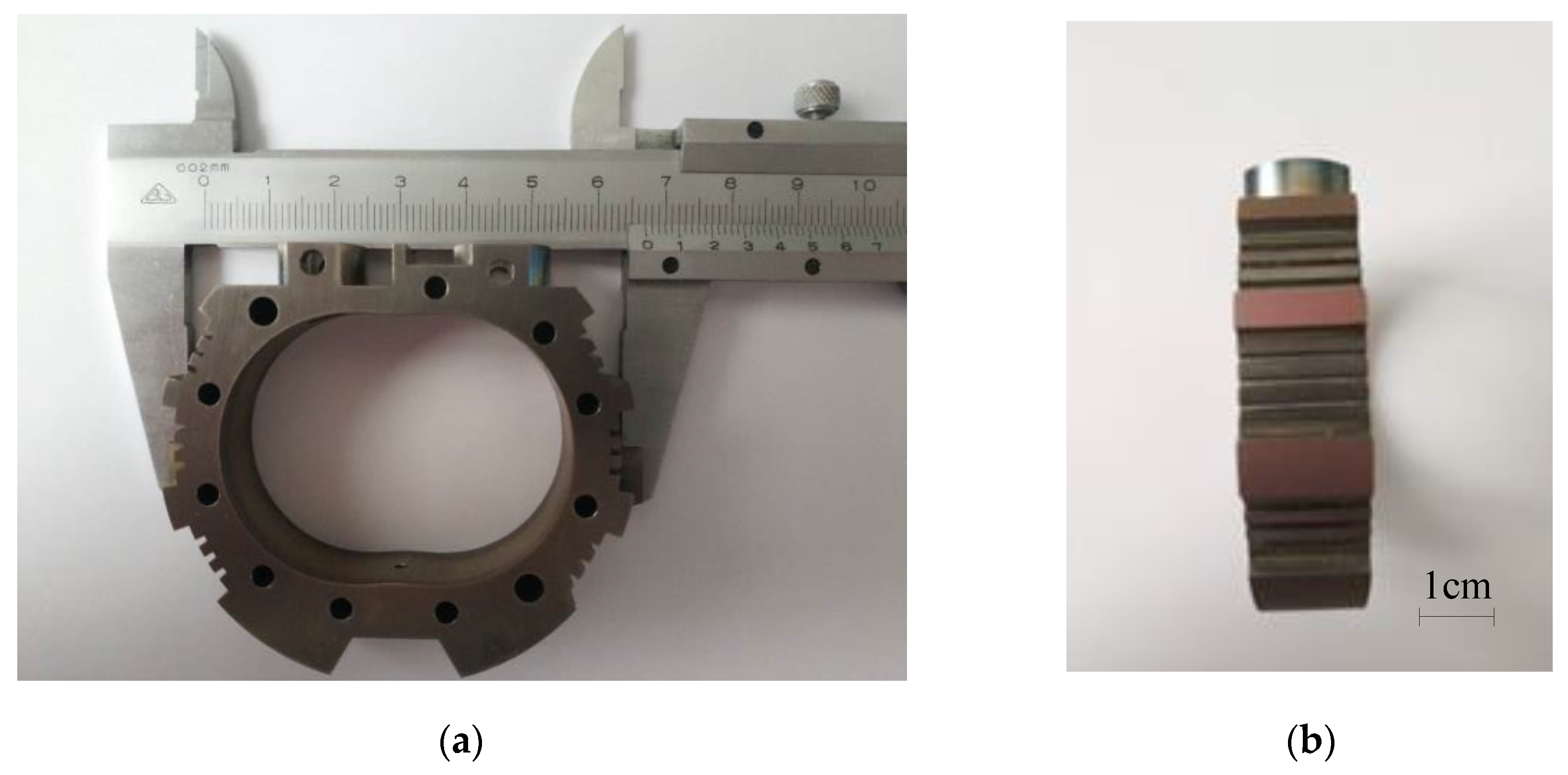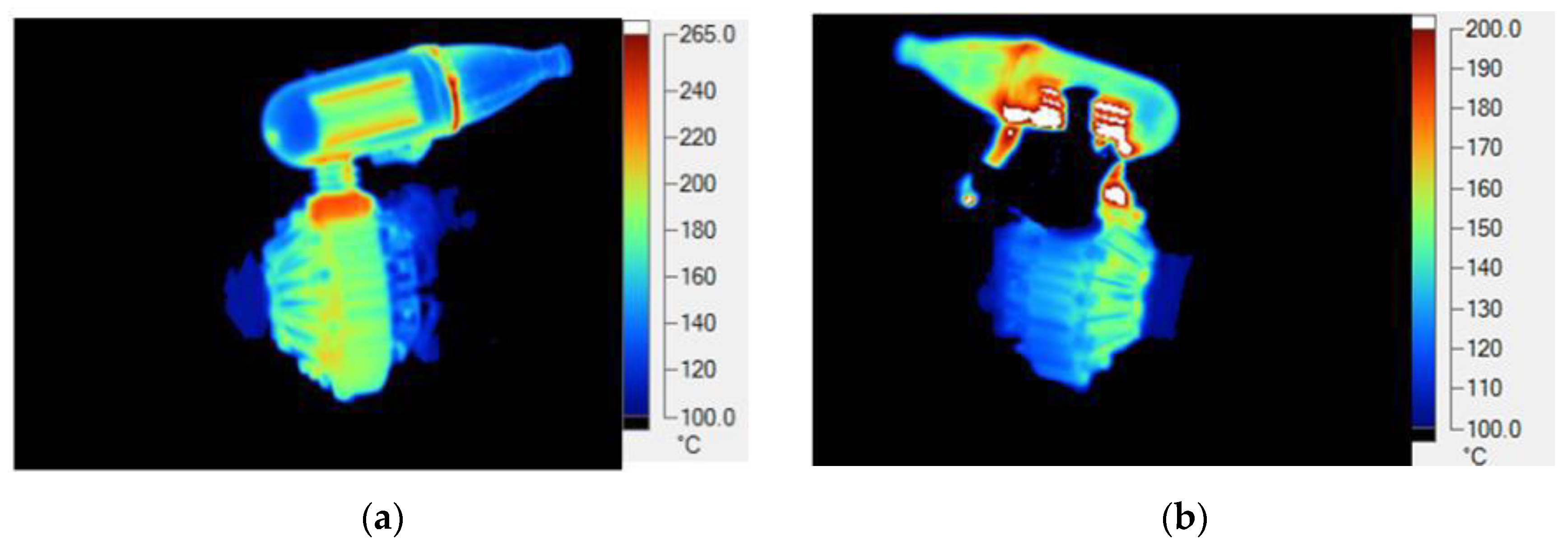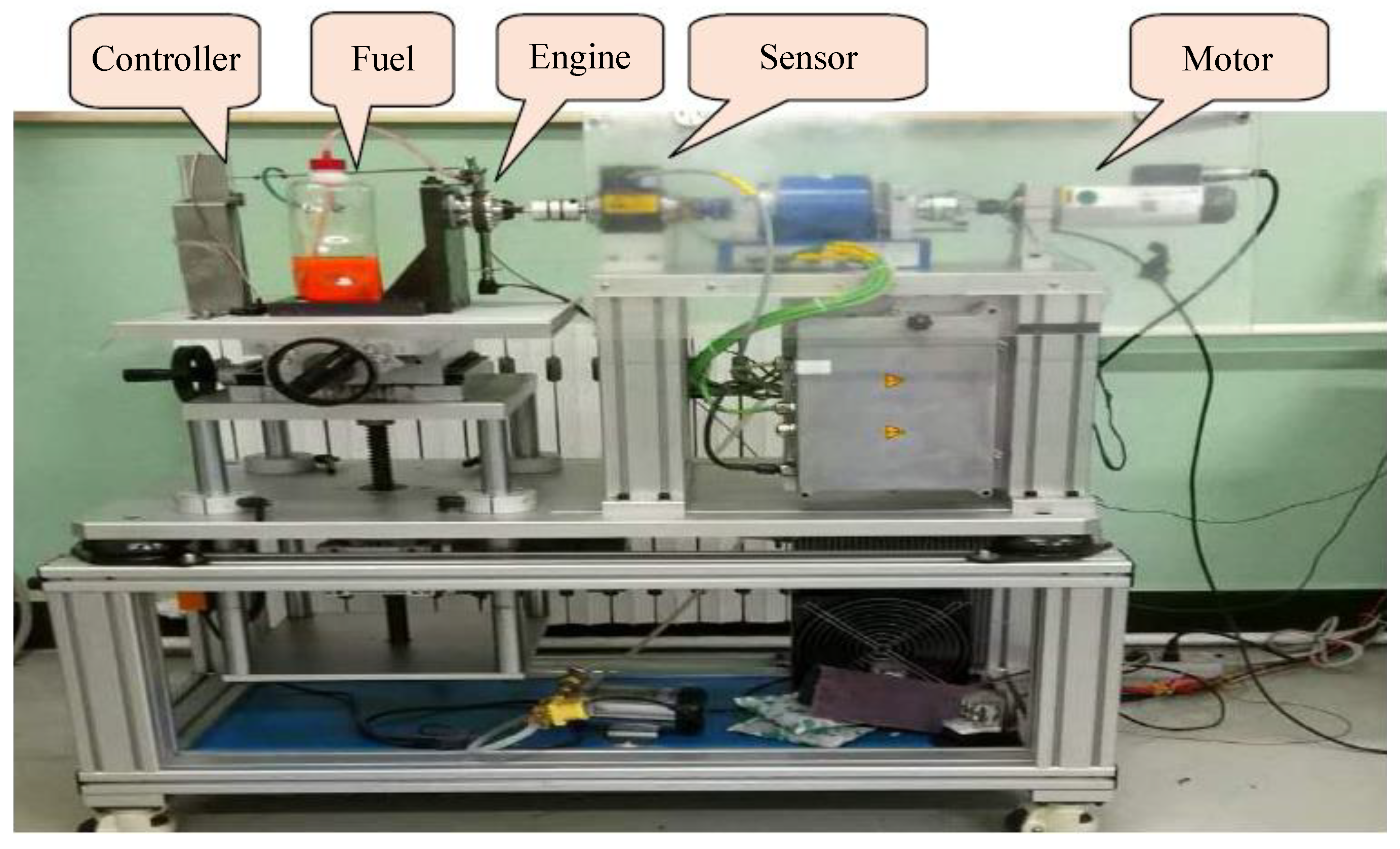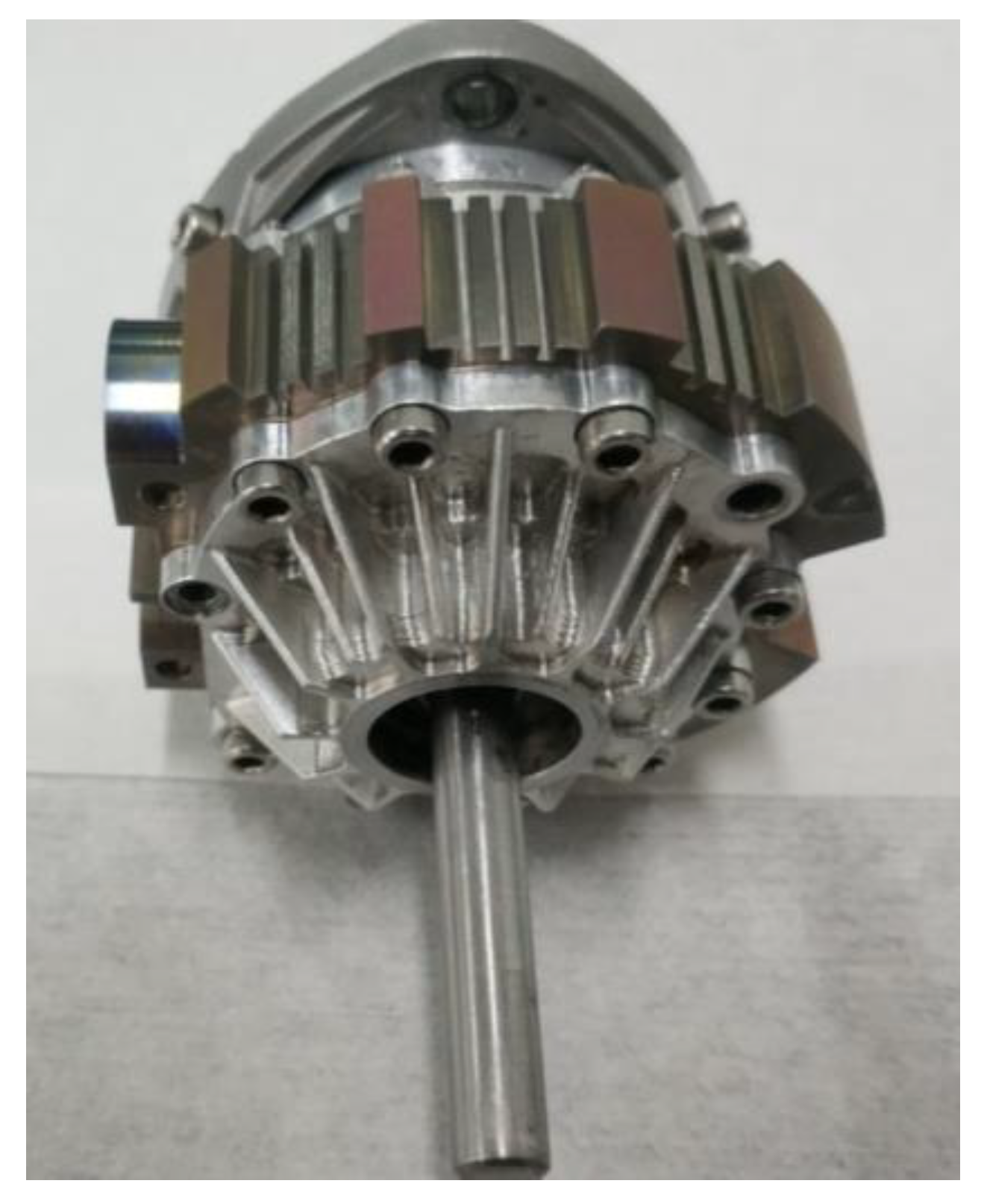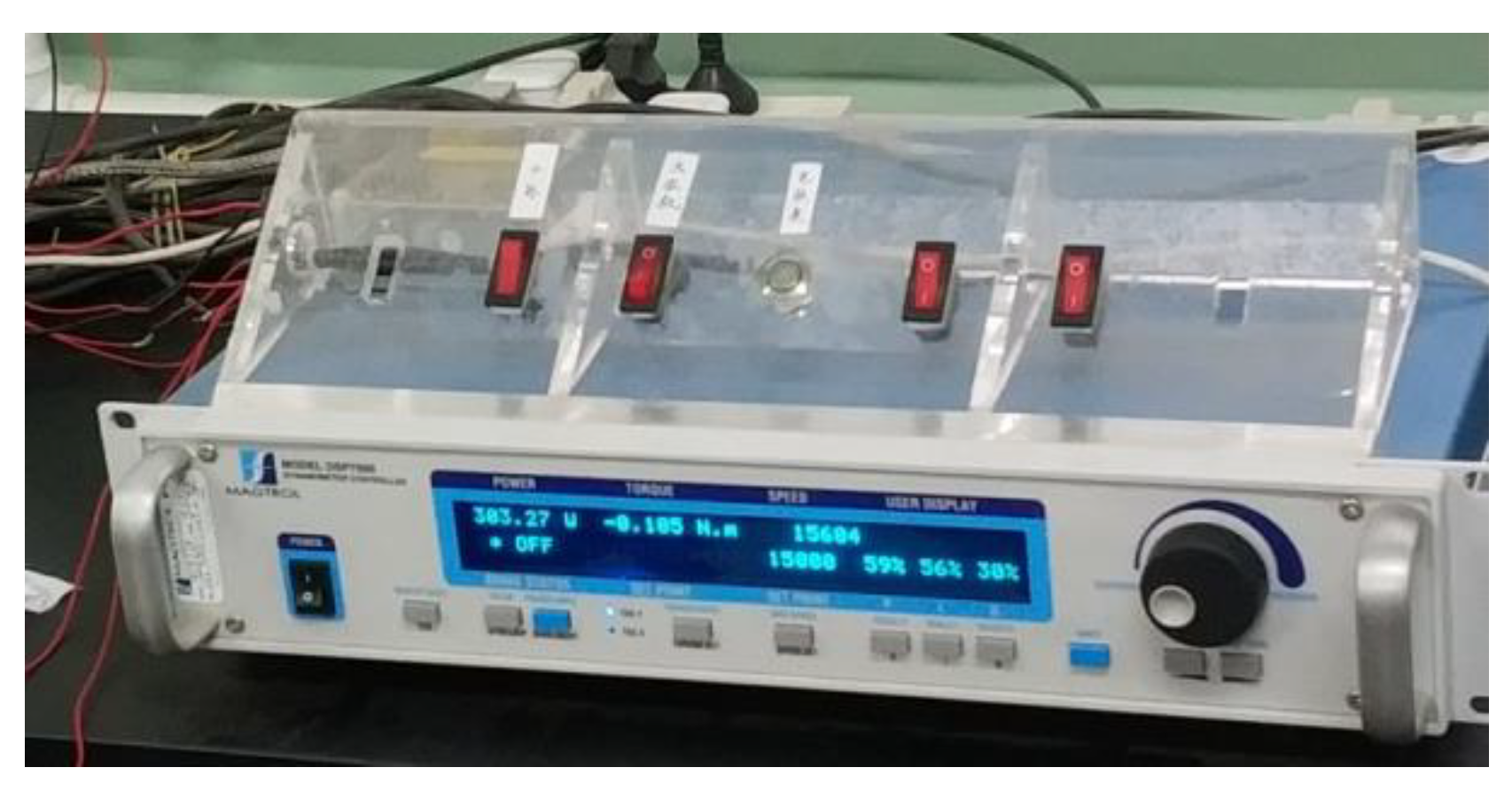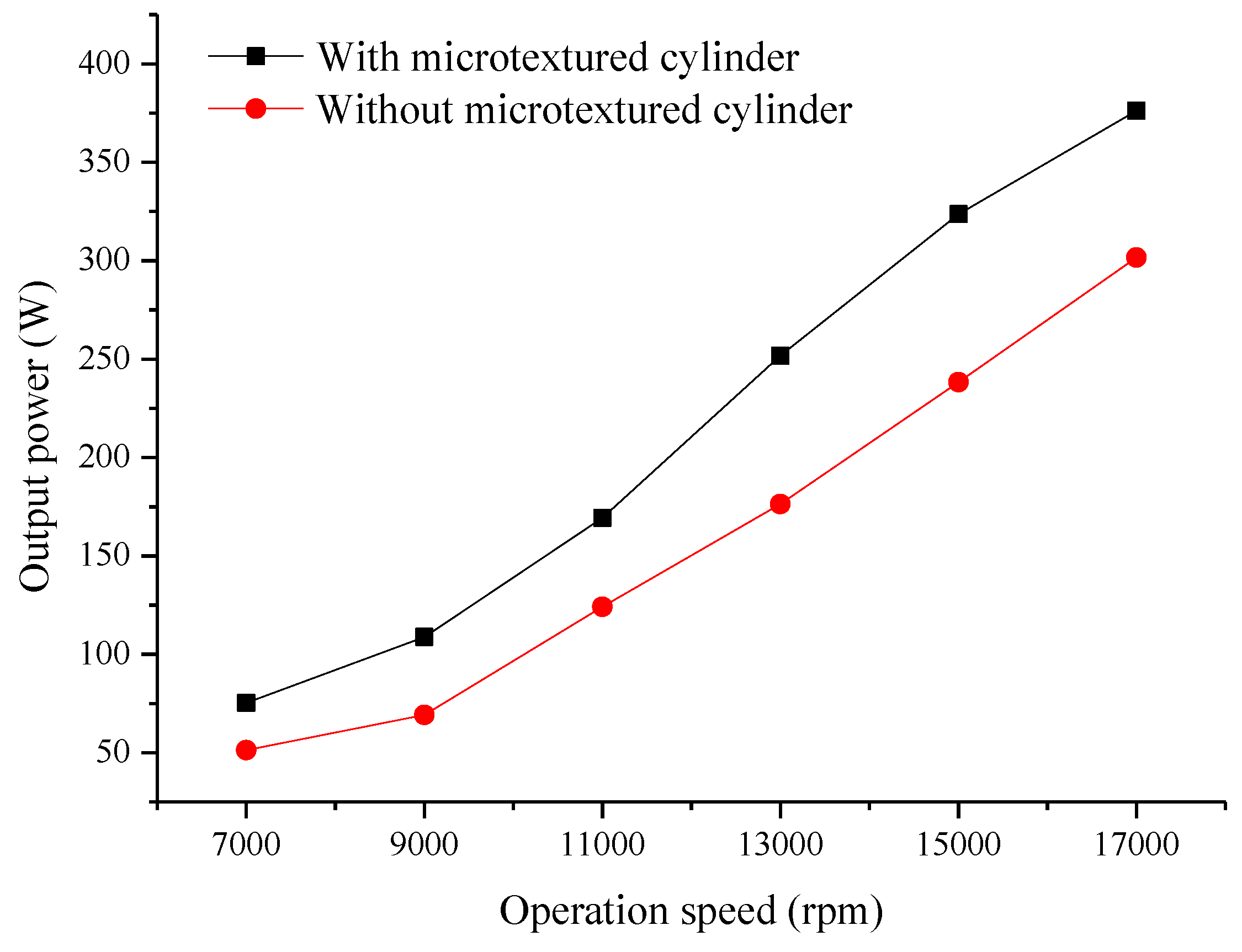3.1. Mechanism of Microtexture Processing
In order to study the processing mechanism of microtexture, experiments with different rib widths are conducted. The experimental setup of the machining center and the cubic boron nitride (CBN) cutting tool are shown in
Figure 5 and
Figure 6, respectively. The parameters of the micro cutting tool are exhibited in
Table 4. The micro cutting parameters are shown in
Table 5.
Figure 7a,b are microscope photographs of the microtextures with the widths of 200 μm and 150 μm, respectively. From the results of
Figure 7c–e, it can be concluded that the accuracy can still be maintained when the range of rib width is among 100 μm and 20 μm. However, when the rib width is 10 μm, the shape of the rib has been deformed, which is brought on by the minimum cutting thickness [
21], and the defect on the right side of the rib has affected the precision of the width, decreasing the quality of the rib, making it unable to satisfy the processing requirements. The result of the most suitable rib width in micro cutting experiments and simulations shows a close match.
Ti-6Al-4V titanium alloy is an elastoplastic material. Based on the principle of minimum cutting thickness, when the stress is less than the yield strength of the material, the material only deforms elastically, and the slight plastic deformation can be restored to the original state. At this time, the tool scratches the material instead of shearing it. When the rib width is 10 μm, the strength is insufficient on account of the narrow ribs, and the material is squeezed to the left side by the micro cutting of the cutting tool. When the cutting tool passes, some of the material returns to its original position, resulting in an excess and parabolic material on the right side of the rib as can be seen in
Figure 7f.
In order to ensure the quality of the ridge width at 20 μm, the influence of different feeds on the quality of microtextures has to be studied, and the optimal feed that can control the microtexture quality is determined. The micro cutting parameters are shown in
Table 6.
From the comparison of the topography in the case of the different feeds, it can be determined that at low feed (2 μm/r, 4 μm/r) and high feed (10 μm/r, 12 μm/r), an irregular defect appeared on the right side of the rib, and the precision of the rib width at 20 μm could not be well controlled.
At the critical minimum cutting thickness, the extrusion deformation resulted from the elastic deformation of the material, although shear failure also occurs. As shown in
Figure 8a,b, the smaller the cutting depth is, the more obvious the rebound is. With the decreasing of the feed, the extrusion deformation accompanying the material during shear failure is also more pronounced. When the feed is increased, the material flows up the side after the cutting tool is squeezed during manufacturing; eventually burrs would form on the edge of the ribs, as shown in
Figure 8e,f. Moreover, with the increase in feed, the burr on the edge is more obvious, as shown in
Figure 9. When the feed rate increase, the workpiece across the tool rake face with further velocity. It is well known that the cutting velocity is the most significant factor influencing tool wear. Therefore, further tool wear may cause plowing action instead of that, resulting in larger burr size in both the height and thickness directions. On the other hand, according to definition of the burr formation, each operation that eases the plastic deformation may increase the probability of burr formation. Thus, as the spindle speed increases, the cutting temperature in the tool–work interface also increases, resulting in less flow stress during machining [
22]. When the feed equals 6 μm/r or 8 μm/r, both the effect of material removal and the formation of burrs can be controlled, resulting in a high quality of rib, as exhibited in
Figure 8c,d. When the feed is 6 μm/r, the surface roughness
Ra equals 0.607 μm, and when the feed is 8 μm/r, the surface roughness
Ra equals 1.072 μm. Therefore, the most suitable feed is 6 μm/r.
In order to study the influence of micro cutting speed on the precision of the microtextures, a series of experiments at different rotation speeds was conducted. The micro cutting parameters are shown in
Table 7.
At lower rotation speeds (1000 r/min and 1500 r/min), the material on the edge of the ribs will flow up the side of the cutting tool and form small burrs, caused by the viscoelastic properties of the Ti-6Al-4V titanium alloy material, as shown in
Figure 10a,b. At higher speeds (2500 r/min and 3000 r/min), owing to the short time the material does not flow sufficiently during the process, resulting in the formation of chip on the outside of the edge, leading to a larger rib width as shown in
Figure 10d,e. When the rotation speed equals 2000 r/min as shown in
Figure 10c, the material outside the edges is satisfactorily removed and the chips are discharged, resulting in a perfect rib width.
In order to ensure the consistency of rib width, five positions are selected randomly on the rib, where the width of the processed rib is measured as shown in
Figure 11. The measurement results are 20.724 μm, 20.333 μm, 19.942 μm, 21.115 μm and 20.724 μm, respectively, where the accuracy of rib width is controlled from 0.29% to 5.58%. The accuracy of rib width can be appropriately controlled.
In addition to ensuring the accuracy of the rib width, the surface roughness of the microtexture is also an important indicator for evaluating the optimal micro cutting parameters. As shown in
Figure 12, the surface roughness of the microtexture was measured at 2000 r/min. The surface roughness of the bottom of the entire microtexture is 0.495 μm, and the best local area can reach
Ra 0.046 μm, having a high precision.
Through the above analysis, the optimal micro cutting parameters capable of processing the rib and the optimal microtexture surface quality can be obtained. The optimal micro cutting parameters are presented in
Table 8.
